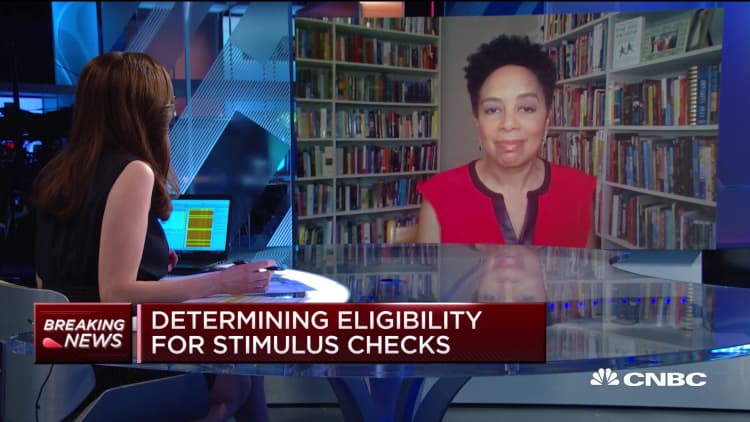Some Americans who are eagerly awaiting their coronavirus stimulus payments may be in for an unwelcome surprise: less money than they had expected.
News that $1,200 payments are coming to individuals and $2,400 for couples has made headlines since Congress passed the CARES Act in March. Dependents are also eligible for $500 payments.
Yet those payments are targeted at low- and middle-income Americans, which means higher earners get gradually reduced sums, and sometimes no money at all. Plus, not all dependents qualify.
How the payments are calculated
The coronavirus stimulus payments are based on your adjusted gross income from your most recent tax return from either 2018 or 2019.
If you have filed your returns for this year, the government will use that information. If you have not, your 2018 tax returns will be used.
If you earn up to $75,000 as an individual, $112,500 as head of household or $150,000 as a married couple filing jointly, you are eligible for a full stimulus payment.
That is $1,200 for individuals or $2,400 for couples.

However, those payments are reduced by $5 for every $100 you earn over those income thresholds.
The money phases out completely if your adjusted gross income is more than $99,000 for individuals, $136,500 for head of household and $198,000 for married filing jointly.
Dependents only qualify for $500 payments if they are under 17, in keeping with the definition used for the child tax credit.
So if you are single with no children and your adjusted gross income was roughly $93,000, you will probably receive around $300 from the government.
Why your check could be less than you expect
If you're disappointed by the size of your check, there could be a couple of reasons for that.
You may have estimated your rebate incorrectly, or there may be an error on the part of the government, said Garrett Watson, senior policy analyst at the Tax Foundation.
The stimulus payments do try to gauge your personal financial situation by using past tax returns. But if you lost your job or had another child this year, those changes will not be accounted for.
When you file your 2020 tax return, your return will likely be topped off if you received less than you were due, Watson said.

In the meantime, if you do see an error in your payments, it might be difficult to correct the issue immediately.
"That's going to be a challenge right now," Watson said. "Much of the IRS support is currently not at full capacity because of some of the coronavirus-related adjustments to their work schedules."
So far, the government has launched web tools for non-filers to enter in their information to get their payment, as well as for individuals to put in their direct deposit information and check their refund status.
However, if it becomes clear that errors or misunderstandings are common, they may have to come up with a formal way to address those issues, Watson said.
More from Personal Finance:
SSI beneficiaries will get coronavirus stimulus payments automatically
New government app showing status of stimulus payments has rocky debut
Paper stimulus checks could be delayed by up to 5 months



